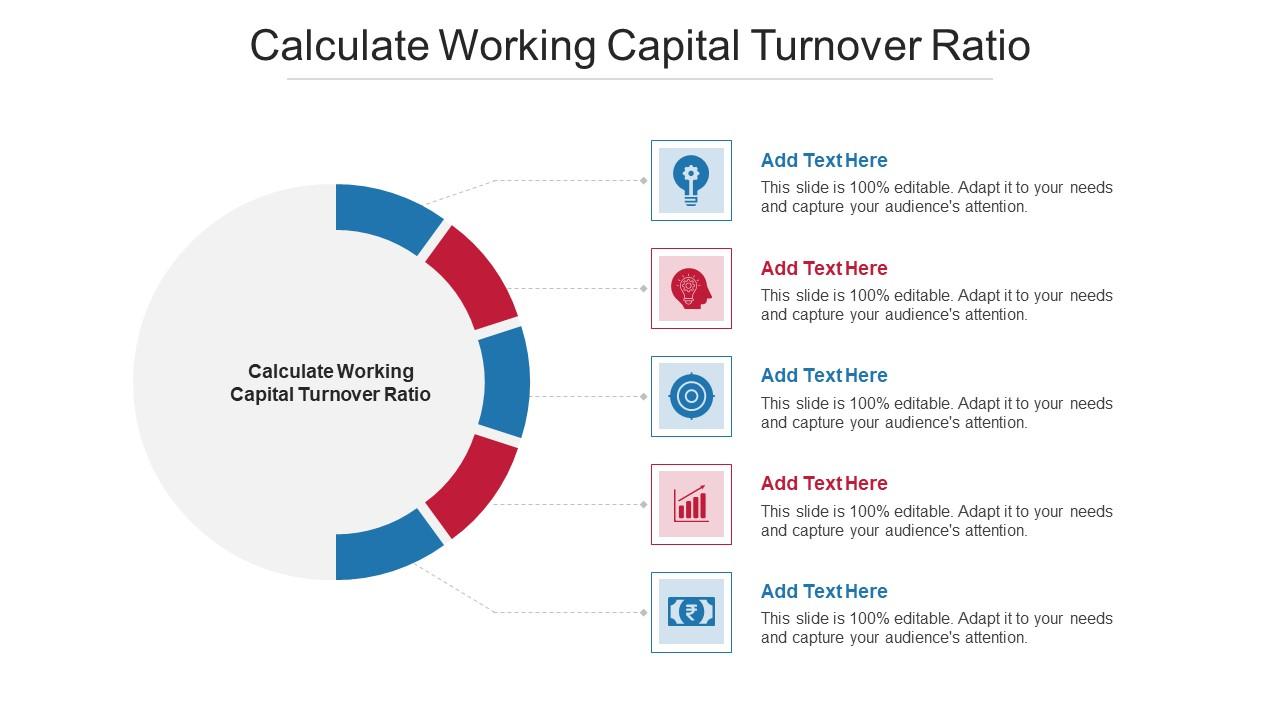

Finance
What Is A Turnover Rate In Stocks
Published: January 17, 2024
Learn the importance of turnover rate in stocks and how it impacts your finances. Discover how to analyze and interpret turnover rate for better investment decisions.
(Many of the links in this article redirect to a specific reviewed product. Your purchase of these products through affiliate links helps to generate commission for LiveWell, at no extra cost. Learn more)
Table of Contents
Introduction
When it comes to investing in stocks, understanding various concepts and metrics is crucial for making informed decisions. One such key metric is the turnover rate, which provides valuable insights into the trading activity and liquidity of a stock. The turnover rate, also known as the turnover ratio or turnover frequency, measures the extent to which stocks within a portfolio are bought and sold over a given period.
For investors, the turnover rate serves as a measure of how actively a particular stock is being traded. It is an important aspect of analyzing the investment potential and risk associated with a stock. By understanding the turnover rate, investors can gain a clearer picture of the market dynamics and the level of investor interest in a particular stock.
In this article, we will delve deeper into the concept of turnover rate in stocks. We will explore its definition, importance, factors affecting it, and how it is calculated. Furthermore, we will discuss the interpretation of turnover rates and provide examples of stocks with high and low turnover rates. By the end of this article, you will have a comprehensive understanding of turnover rates in stocks and their significance in the world of investing.
Definition of Turnover Rate in Stocks
The turnover rate in stocks refers to the frequency at which the shares of a particular stock are bought and sold within a specific time period. It is a measure of the trading activity and liquidity of a stock. The turnover rate is expressed as a percentage and represents the proportion of the total shares outstanding that have been traded during the given time period.
A high turnover rate suggests a substantial level of buying and selling activity, indicating a more active and liquid market for the stock. Conversely, a low turnover rate implies less trading activity and may indicate a lack of investor interest or a more stable and long-term investor base.
The turnover rate can vary significantly across different stocks and sectors. Some stocks may have turnover rates that exceed 100% or even 200% annually, signifying that the shares have been traded multiple times within a year. On the other hand, certain stocks may have lower turnover rates, indicating a more conservative and less actively traded investment.
The turnover rate is an important metric for both individual investors and institutional traders. It provides insights into the level of investor interest and sentiment towards a stock. Furthermore, it can help investors determine the potential liquidity of a stock, which is particularly important for those looking to buy or sell large quantities of shares without significantly impacting the market price.
It’s important to note that the turnover rate should not be confused with the employee turnover rate, which measures the number of employees leaving a company and being replaced within a given time frame. In the context of stocks, turnover rate specifically refers to the trading activity and volume of shares bought and sold on the stock market.
Importance of Turnover Rate in Stocks
The turnover rate is a key metric that holds significant importance for investors and traders in the stock market. It provides valuable insights into the trading activity and liquidity of a stock, which can have a direct impact on investment decisions. Here are some reasons why the turnover rate is important:
- Market Dynamics: The turnover rate offers a glimpse into the dynamics of the stock market. A high turnover rate indicates an active and liquid market, with frequent buying and selling of shares. This suggests a higher level of investor interest and trading activity, which can lead to better price discovery and efficient market functioning.
- Investor Sentiment: The turnover rate is a reflection of the sentiment and level of interest among investors for a particular stock. A high turnover rate might suggest that investors have a strong belief in the growth potential or volatility of the stock, leading to higher trading volumes. Conversely, a low turnover rate may indicate a lack of investor interest or a more stable and long-term investment approach.
- Liquidity: The turnover rate helps assess the liquidity of a stock. High turnover rates generally imply greater liquidity, meaning that it is easier to buy or sell shares of that stock without significantly impacting the market price. This is crucial for investors who require liquidity, especially those managing large portfolios or executing trades on a frequent basis.
- Risk Assessment: The turnover rate can provide insights into the risk associated with a particular stock. A high turnover rate may signify increased volatility and higher trading costs, which can be a concern for conservative investors or those seeking lower-risk investments. On the other hand, a low turnover rate might suggest stability but could also indicate a lack of market interest or potential liquidity issues.
- Investment Strategy: The turnover rate can inform investment strategies. Active traders who aim to capitalize on short-term price movements may prefer stocks with high turnover rates, as they provide more liquidity and frequent trading opportunities. Conversely, long-term investors may focus on stocks with lower turnover rates, indicating a more stable investment over the course of several years.
In summary, the turnover rate plays a crucial role in understanding the market dynamics, investor sentiment, liquidity, risk, and investment strategies associated with a specific stock. By analyzing the turnover rate, investors can make more informed decisions and align their investment goals with the characteristics and trading activity of the stocks they are considering.
Factors Affecting Turnover Rate in Stocks
The turnover rate in stocks can be influenced by a variety of factors that impact the trading activity and liquidity of a particular stock. Understanding these factors is crucial for investors and traders to gain a comprehensive view of the market dynamics and make informed investment decisions. Here are some key factors that can affect the turnover rate in stocks:
- Market Conditions: Market conditions, such as overall market volatility, economic trends, and investor sentiment, can significantly impact the turnover rate. During periods of high market volatility and uncertainty, investors may engage in more active trading, leading to an increase in turnover rates. Conversely, during stable and bullish market conditions, investors may adopt a more buy-and-hold approach, resulting in lower turnover rates.
- Company Earnings and News: The release of company earnings reports, news, and announcements can have a substantial impact on the turnover rate of a stock. Positive earnings surprises, innovative product developments, or strategic partnerships can generate investor interest and lead to increased trading activity. Conversely, negative news, such as poor financial performance or regulatory issues, can trigger a higher turnover rate as investors look to exit their positions.
- Industry and Sector Trends: The turnover rate can vary across different industries and sectors. Certain industries, such as technology or biotechnology, tend to have higher turnover rates due to the rapid pace of innovation and investor demand. Conversely, sectors like utilities or consumer staples may exhibit lower turnover rates as they are perceived as more stable and less prone to significant market fluctuations.
- Market Participants: The type of market participants and their trading strategies can impact the turnover rate. Institutional investors, such as hedge funds or mutual funds, often engage in more active trading, leading to higher turnover rates. Retail investors, on the other hand, may have a longer-term investment approach, resulting in lower turnover rates. The presence of high-frequency traders can also contribute to increased turnover rates as they aim to capture short-term price movements.
- Stock Market Liquidity: The liquidity of the overall stock market can influence the turnover rate of individual stocks. In a highly liquid market, where there is a large number of buyers and sellers, stocks are more likely to have higher turnover rates. Conversely, in a less liquid market, stocks may have lower turnover rates as it can be more challenging to buy or sell shares without impacting the market price significantly.
It’s important to note that the factors affecting turnover rates can vary from stock to stock and are subject to change over time. By considering these factors, investors can gain a better understanding of the dynamics influencing the turnover rate and make more informed investment decisions.
Calculation of Turnover Rate in Stocks
The turnover rate in stocks is calculated by dividing the total volume of shares traded during a specific time period by the average number of shares outstanding. This calculation provides a measure of the extent to which shares are being bought and sold within the given timeframe. Here’s the formula to calculate turnover rate:
Turnover Rate = (Total Volume of Shares Traded) / (Average Number of Shares Outstanding)
To calculate the turnover rate, you will need the following information:
- Total Volume of Shares Traded: This refers to the total number of shares that have been traded during the specified time period. It includes both the shares bought (volume of shares purchased) and the shares sold (volume of shares sold) during that period. This information can typically be obtained from financial data sources or stock market exchanges.
- Average Number of Shares Outstanding: This represents the average number of shares issued by the company and held by shareholders during the given time period. The number of shares outstanding can be found in the company’s financial statements or can be calculated by taking the average of the shares outstanding at the beginning and end of the period.
Once you have these two pieces of information, you can calculate the turnover rate by dividing the total volume of shares traded by the average number of shares outstanding. The result will be expressed as a percentage, representing the proportion of shares traded relative to the total shares outstanding.
It’s important to note that turnover rates can be calculated for various time periods, such as daily, monthly, quarterly, or annually, depending on the desired level of analysis. Different time periods may yield different turnover rates, allowing for a more nuanced understanding of the stock’s trading activity and liquidity.
By calculating the turnover rate, investors can gain insights into the level of trading activity and liquidity in a particular stock. This information can be useful for assessing the market dynamics, investor sentiment, and the potential risks and opportunities associated with the stock.
Interpretation of Turnover Rate in Stocks
The turnover rate in stocks provides valuable insights into the trading activity and liquidity of a stock. Understanding how to interpret the turnover rate is crucial for investors to make informed decisions and assess the market dynamics surrounding a particular stock. Here are some key points to consider when interpreting the turnover rate:
- High Turnover Rate: A high turnover rate indicates significant trading activity and liquidity for a particular stock. This suggests that shares are being bought and sold frequently, potentially reflecting a high level of investor interest or market volatility. High turnover rates may be seen as an indicator of more active trading and can provide opportunities for short-term traders to capitalize on price fluctuations. However, it’s important to note that a high turnover rate can also indicate higher transaction costs and potential risks associated with market volatility.
- Low Turnover Rate: Conversely, a low turnover rate suggests less frequent trading and lower liquidity for a stock. This may indicate a more stable investor base or a lack of interest from market participants. Stocks with low turnover rates are typically associated with long-term investment strategies and may be favored by investors seeking stability and a lower level of market volatility. However, it’s important to assess the reason behind the low turnover rate, as it could potentially indicate a lack of market interest or potential liquidity issues.
- Comparisons to Industry and Sector Averages: It can be useful to compare the turnover rate of a stock to the averages within its industry or sector. If a stock has a higher turnover rate than the industry average, it may indicate higher trading activity and potentially reflect the stock’s strong growth prospects or particular market interest. Conversely, if a stock has a lower turnover rate compared to its peers, it could indicate that the stock is less actively traded or faces challenges within its industry.
- Monitoring Changes Over Time: Monitoring the turnover rate over different time periods can provide insights into the market sentiment and investor behavior towards a specific stock. If the turnover rate increases significantly over time, it could indicate a change in investor sentiment, market dynamics, or the release of important news or earnings reports. Conversely, a decreasing turnover rate may suggest a decline in investor interest or a more stable market environment.
- Consideration of Trading Costs: It’s important to consider the potential impact of trading costs when interpreting the turnover rate. High turnover rates can result in higher transaction costs, including brokerage fees and bid-ask spreads. Investors should consider these costs in relation to their investment strategy and individual objectives when evaluating the turnover rate.
It’s crucial to remember that the turnover rate is just one metric to consider when analyzing a stock. Investors should assess a range of other factors, including fundamental analysis, company financials, industry trends, and risk factors, in conjunction with the turnover rate to make well-informed investment decisions.
Examples of High and Low Turnover Rate Stocks
Examining examples of high and low turnover rate stocks can help illustrate the practical application of this metric and provide insights into different market dynamics. Here are a few examples:
- High Turnover Rate Stock: Technology stocks often exhibit high turnover rates due to the rapid pace of innovation and investor interest. For example, consider a popular tech company with a high turnover rate, such as Apple Inc. The stock of Apple is actively traded on a daily basis, with millions of shares changing hands. The high turnover rate is driven by investor anticipation of new product launches, important earnings releases, and market sentiment around technological trends. High turnover rates in such stocks provide opportunities for short-term traders to capitalize on price movements, but also require careful risk management due to the potential volatility.
- Low Turnover Rate Stock: Utility companies are often associated with low turnover rates due to their stability and predictable cash flows. Take the example of a well-established utility company like NextEra Energy. The stock of NextEra Energy tends to have a relatively low turnover rate compared to more volatile sectors. This is because utility companies are known for their consistent earnings and dividend payments, attracting long-term investors who prioritize stability over short-term trading opportunities. While low turnover rates can indicate a more stable investment, they can also imply less active trading and potential challenges in liquidity for those looking to buy or sell significant quantities of shares.
- Industry-Specific Turnover Rates: Different industries can showcase varying turnover rates based on their specific market dynamics. For instance, consider the retail sector, which is known for seasonal demand fluctuations. Retail stocks, such as Walmart or Amazon, may experience higher turnover rates during peak shopping seasons like Black Friday or the holiday season. This spike in trading activity is driven by consumer spending patterns and the anticipation of strong retail sales. In contrast, industries like pharmaceuticals or healthcare often have lower turnover rates due to the long-term nature of drug development and regulatory processes.
These examples highlight that turnover rates can vary significantly across different stocks and industries. It’s important to consider the underlying factors driving the turnover rate and how they align with your investment goals and risk appetite. Furthermore, it’s crucial to conduct a comprehensive analysis of other fundamental and technical indicators in conjunction with the turnover rate to make well-informed investment decisions.
Conclusion
The turnover rate in stocks is a vital metric that provides valuable insights into the trading activity and liquidity of a stock. By understanding and analyzing the turnover rate, investors can gain a comprehensive understanding of market dynamics, investor sentiment, and risk associated with a particular stock.
Throughout this article, we explored the definition of turnover rate in stocks and its importance in investment decision making. We discussed the factors that can influence the turnover rate, including market conditions, company earnings, industry trends, market participants, and stock market liquidity. We also outlined the calculation of the turnover rate and how it can be interpreted to assess market sentiment and trading activity.
Furthermore, we looked at examples of high and low turnover rate stocks to illustrate the practical application of this metric. High turnover rate stocks, such as those in the technology sector, are characterized by active trading and investor interest, while low turnover rate stocks, such as utility companies, offer stability and long-term investment appeal.
It is important for investors to consider the turnover rate in conjunction with other fundamental and technical factors when making investment decisions. By combining these insights, investors can gain a more comprehensive view of a stock’s potential and align their investment strategies accordingly.
In conclusion, the turnover rate is an essential metric that provides valuable information about stock market dynamics, investor sentiment, and liquidity. By understanding and analyzing the turnover rate, investors can make more informed decisions and navigate the complex world of stock investing with greater confidence.














